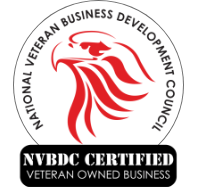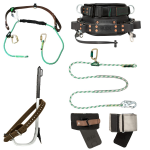What Is an Arborist?
An arborist is a professional in the practice of arboriculture and they are also known as tree surgeons, tree trimmers, or pruners. Arboriculture is the practice of trimming shrubs, and trees to protect powerlines, sidewalks, and roadways. Some arborists specialize in not only cutting dead or renegade branches from trees but specialize in improving the appearance and health of trees and plants. These arborists do this by specializing in tree diseases and treatment. Other arborists specialize in decorative tree/shrub care. An arborist is skilled in tree biology, diagnosis, maintenance practices, and safety procedures.
Arborists cultivate trees and shrubs to increase their health and appearance while reducing the risks they present to the people around them. The responsibility of an arborist is diagnosing and treating diseases in the trees under their care, they are sometimes referred to as tree doctors.
Job duties of an arborist:
- Safely removing dead or diseased branches.
- Diagnosing and treating disease in trees and shrubs.
- Removing branches that may grow to obstruct power lines, roadways, or walkways.
- Trimming or pruning branches into ornamental shapes.
Arborist tree care services:
- Tree Removal: this the last resort but arborists will remove a tree that has died, become infested with insects or pests, in some way poses a threat to the property or is simply no longer needed.
- Tree Pruning: removing branches or stems to maintain or improve the health, growth, and natural form of a tree.
- Emergency Tree Care/Storm Response: A service to respond to trees that are hazardous due to storms or other dangerous situations while reducing further risk.
- Tree Planting: Knowing where, how, and when to plant a tree is imperative to its success. A certified arborist can determine the appropriate species for your particular climate/location.
- Tree Health: An arborist can diagnose tree disease or pest problems and make proper recommendations for its treatment.
What is a Utility Arborist?
A utility arborist is an arborist that works for a utility company and oversees vegetation management. Vegetation management is vital for keeping costs lower for utility companies. Vegetation management is controlling and eliminating potentially harmful trees and shrubs. This is important for utility companies because weather-related power outages due to trees falling on power lines are a constant challenge. When trees fall on power lines the power will go out and companies need to rush to fix the situation. A utility arborist will need to identify and remove hazardous trees and implementing strategies to minimize the establishment of incompatible species under and near power lines and the control of weeds.
A utility arborist will have knowledge and experience in the field of electric utility vegetation management (UVM). A utility arborist will need to work near power lines which involves additional training. They may need to be certified as a Qualified Line Clearance Arborist. Extra training is required to be a utility arborist because there are minimum distances that must be kept from power lines depending on the voltage. Common distances for urban settings which are low voltage lines is 10 feet. The industry requires arborists to specialize in rigging techniques, climbing, as well as the use of power equipment.
The following are the main responsibilities of a utility arborist:
- electric utility pruning
- program management
- integrated vegetation management
- electrical knowledge
- customer relations
- storm response
How to Become an Arborist?
To be an arborist formal education is not a requirement, although depending on an employer or the line of work you want to be in you may need a certification. Most employers want to see a balance of education in arboriculture and experience. See the options below:
Option 1: Get an Arborist Degree
It is not a requirement, but you could get a bachelor’s degree in forestry, environmental science, botany, horticulture, or biology.
Option 2: Training program
Arborists can receive on-the-job training from many different avenues. You can gain on-site experience working for tree care companies, landscaping companies, nurseries, municipalities, and utilities.
Option 3: Get ISA Arborist Certification
Depending on your employer or the type of arborist you want to pursue you may be required to have an International Society of Arboriculture (ISA) certification. Arborists can also earn a specialized certification to demonstrate their knowledge in a particular aspect of arboriculture.
ISA’s certifications:
- ISA Certified Arborist Municipal Specialist
- ISA Certified Arborist Utility Specialist
- ISA Certified Tree Worker Climber Specialist
- ISA Certified Tree Worker Aerial Lift Specialist
- ISA Board Certified Master Arborist
To be eligible for the ISA’s Certified Arborist credentialing exam, candidates need:
- 1-year experience with a bachelor’s degree.
- 2 years’ experience with an associate degree.
- 3 years’ experience is required for less than an associate degree.
What Equipment Does an Arborist Need?
Since arborists are climbing trees and working from tall trees the job requires a lot of safety precautions as well as knowledge and expertise to safely climb trees, which equipment to use, and safety procedures. The list of arborist gear is very long but the most important categories are:
1. Arborist Rigging Equipment
Rigging equipment is used for climbing trees, transporting cuts of limbs safely to the ground, as well as moving heavy equipment and tools to and from the operator high up in the canopy. Rigging equipment includes blocks, pulleys, rope, cable pullers, and more.
Tree trimming is used in tree pruning which involves reducing the size of the tree without harming the tree. Tree trimming tools are fiberglass poles, pruners, saw blades, hand saws, chainsaws, and more.
Climbing equipment is very important for the safety of an arborist. Arborist climbing equipment includes climbing spurs, climbing belts, BuckSqueeze, carabiners, and more.
Fall protection is a necessity when working from tall trees or even from the bucket. Arborists will need anchors, harnesses, lifelines, lanyards, and more.
Arborist resources for more information:
- The International Society of Arboriculture supports the practice and advancement of arboriculture through technology, research, and education. The ISA promotes the benefits of trees to society and offers online professional development courses, and a professional certification program.
- The Tree Care Industry Association offers a large “Tree Care Academy” of professional education options. It also runs the Certified Tree Care Safety Professional (CTSP) program for tree care safety professionals and accredits tree care companies for safety & adherence to industry standards.
Divergent Alliance – Wholesale Arborist Supplies
 Divergent Alliance is a supplier of arborist equipment that includes a variety of tree cutting, rigging, and climbing equipment from Safewaze, Jameson, and Buckingham Manufacturing.
Divergent Alliance is a supplier of arborist equipment that includes a variety of tree cutting, rigging, and climbing equipment from Safewaze, Jameson, and Buckingham Manufacturing.
If you need to buy wholesale arborist tools and supplies, call Divergent Alliance at (847) 531-0559 or submit a contact form for our volume pricing. We offer fast shipping across the United States.





